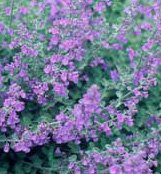 I won't be seeing these beauties any time soon. I was fooled by 3 straight weeks of lovely, warm weather- downright hot some days! Mother Nature seems to have a thing about Memorial Day. It's as if she knows most everyone wants to go camping. (So, it rains all weekend and then it's gorgeous on Tuesday.)
I won't be seeing these beauties any time soon. I was fooled by 3 straight weeks of lovely, warm weather- downright hot some days! Mother Nature seems to have a thing about Memorial Day. It's as if she knows most everyone wants to go camping. (So, it rains all weekend and then it's gorgeous on Tuesday.)A hard frost took it's toll and my tomato plants are no more. True confessions: I hated vegetables until I had the good fortune of visiting France in the summer- where I discovered what vegetables are supposed to taste like. Mmmmm.... fresh-picked, vine-ripened, organic veggies. Not that tasteless stuff the grocery stores pass off as produce.
Since then, I've made many feeble attempts at growing my own - not easy at high elevations. These latest casualities were pink heirlooms I had started in a sunny window months ago. I guess it's back to the Farmer's Market for me....

















